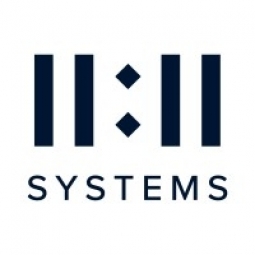公司规模
SME
地区
- America
国家
- United States
产品
- 11:11 Private Cloud
- 11:11 Managed Services
技术栈
- Cloud Computing
- Data Storage
- Intrusion Detection
实施规模
- Enterprise-wide Deployment
影响指标
- Cost Savings
- Productivity Improvements
- Digital Expertise
技术
- 基础设施即服务 (IaaS) - 云计算
- 基础设施即服务 (IaaS) - 私有云
适用行业
- 教育
服务
- 云规划/设计/实施服务
- 网络安全服务
关于客户
Founded to meet the needs of Higher Education, FolderWave focuses on people and processes, delivering a powerful engine that drives operational and strategic objectives for their clients. All FolderWave engagements incorporate the complete process, including consulting, document management/data entry, tailored workflow, communication and collaboration, system integration, training, maintenance, updates, and program management. FolderWave is a preeminent solutions provider. Handling hundreds of thousands of Student Application and Financial Aid Cases, as well as millions of documents, FolderWave has repeatedly proven it can offer rapid deployment to address complex problems while demonstrating a significant ROI.
挑战
FolderWave, a private company based near Boston, is one of the earliest cloud-space providers for Higher Education. Businesses that serve the Higher Education enrollment management industry must be able to manage large volumes of personal data and information, prioritizing security – all in an environment where transaction volumes are highly cyclical and date sensitive. Success is further determined by an organization’s ability to deliver solutions that can be tailored to the specific needs of each institution it serves. There is tremendous variability in the process of enrollment management from one school to another. Today, FolderWave helps flagship colleges and universities like Boston College, Carnegie Mellon, Northeastern, Merrimack College, Wittenberg, Tulane, and Worcester Polytechnic Institute centralize millions of documents representing a soup-to-nuts approach to admission applications, financial aid forms, academic transcripts, contracts and grants, and practically any other paperless documentation each school wants to track.
解决方案
Helping FolderWave handle this virtual avalanche of data is [11:11 Systems]. [11:11] provides FolderWave with a secure and reliable hosting environment, including server management, intrusion detection, managed security, high availability, and backup services. Since the fall of 2014, [11:11] has also provided FolderWave with a cloud environment to help the Software-as-a-Service (SaaS) provider store and safeguard the customer data it maintains. This allows FolderWave to assign its expertise to solution development, helping each of its clients maximize their enrollment management objectives. In 2002, FolderWave hosted a server on which its software was installed. With substantial growth projections, IT management could become all-consuming if the company continued to host and manage that data on its own. According to Burke, a tour of the [11:11 Systems] hosting facility illuminated how well-maintained it was and how personnel respond to various issues that arise. [11:11] knew the security space well and passed key security audits. With [11:11] handling the managed services and the private cloud environments, FolderWave personnel become master integrators that focus their expertise on capturing more data to permit better analytics.
运营影响

Case Study missing?
Start adding your own!
Register with your work email and create a new case study profile for your business.
相关案例.

Case Study
Revolutionizing Medical Training in India: GSL Smart Lab and the LAP Mentor
The GSL SMART Lab, a collective effort of the GSL College of Medicine and the GSL College of Nursing and Health Science, was facing a challenge in providing superior training to healthcare professionals. As clinical medicine was becoming more focused on patient safety and quality of care, the need for medical simulation to bridge the educational gap between the classroom and the clinical environment was becoming increasingly apparent. Dr. Sandeep Ganni, the director of the GSL SMART Lab, envisioned a world-class surgical and medical training center where physicians and healthcare professionals could learn skills through simulation training. He was looking for different simulators for different specialties to provide both basic and advanced simulation training. For laparoscopic surgery, he was interested in a high fidelity simulator that could provide basic surgical and suturing skills training for international accreditation as well as specific hands-on training in complex laparoscopic procedures for practicing physicians in India.

Case Study
IoT platform Enables Safety Solutions for U.S. School Districts
Designed to alert drivers when schoolchildren are present, especially in low-visibility conditions, school-zone flasher signals are typically updated manually at each school. The switching is based on the school calendar and manually changed when an unexpected early dismissal occurs, as in the case of a weather-event altering the normal schedule. The process to reprogram the flashers requires a significant effort by school district personnel to implement due to the large number of warning flashers installed across an entire school district.

Case Study
Implementing Robotic Surgery Training Simulator for Enhanced Surgical Proficiency
Fundacio Puigvert, a leading European medical center specializing in Urology, Nephrology, and Andrology, faced a significant challenge in training its surgical residents. The institution recognized the need for a more standardized and comprehensive training curriculum, particularly in the area of robotic surgery. The challenge was underscored by two independent studies showing that less than 5% of residents in Italian and German residency programs could perform major or complex procedures by the end of their residency. The institution sought to establish a virtual reality simulation lab that would include endourological, laparoscopic, and robotic platforms. However, they needed a simulator that could replicate both the hardware and software of the robotic Da Vinci console used in the operating room, without being connected to the actual physical console. They also required a system that could provide both basic and advanced simulation training, and a metrics system to assess the proficiency of the trainees before they performed surgical procedures in the operating theater.

Case Study
Edinburgh Napier University streamlines long-distance learning with Cisco WebEX
• Geographically dispersed campus made in-person meetings costly and inconvenient.• Distance-learning programs in Malaysia, India, and China required dependable, user-friendly online tools to maximize interaction in collaborative workspaces.• Virtual learning environment required a separate sign-in process, resulting in a significant administrative burden for IT staff and limited adoption of collaboration technology.

Case Study
8x increased productivity with VKS
Before VKS, a teacher would spend a lot of time showing a group of 22 students how to build a set of stairs within a semester of 120 hours. Along with not leaving the teacher much time to provide one-on-one support for each student to properly learn carpentry, it also left a considerable amount of room for error. Key information would be misinterpreted or lost as the class was taught in the typical show-and-tell way.

Case Study
Scalable IoT Empowering GreenFlex's Sustainable Growth
GreenFlex, a company that supports sustainable development, decarbonization, and energy efficiency, faced several challenges in its quest to expand its business. The company needed to deploy a robust and sustainable IoT technology to support its growth. It was crucial for them to monitor and control devices at customer sites in a safe and reliable manner. They also needed to integrate devices across a range of communication protocols and gather and act on data to meet efficiency targets. GreenFlex had previously built IoT capabilities into its digital platform, GreenFlexIQ, to monitor and manage customer sites remotely. However, they soon realized that they needed a new platform to support their ambitions. They needed a platform that could scale to connect more devices for production management and make it easier for the operations team to manage devices in the field.







